
When you work in customer service, it’s inevitable that you’ll spend a lot of your time in touch with people who are not too happy with your company right now.
Ninety-nine times out of a hundred, you’ll be writing a response to a complaint, as a customer will be getting in touch exactly because they have a problem.
Naturally, that won’t always feel fun for you. But it does point to how crucial your role is. Customers are a business’s most important asset. Keeping them is what keeps a company in business.
Customer loyalty isn’t a given
But customers are more savvy than ever, and they know how many options are out there. Their loyalty is not guaranteed. Indeed, research from PwC has shown that, worldwide, 32% of all customers would stop doing business with a brand they loved after just one bad experience.
Customer service is only one part of the customer-experience picture, but a pivotal one: you’re dealing with people in those crunch moments when they are less than thrilled with the company. You have the potential to turn their experience around – and stop them from taking their business elsewhere.
When you’re faced with a mountain of complaints and feeling under time pressure, it can be easy to treat writing your responses as a numbers game. But if you prioritise speed, you might rely too heavily on template text that only sort of addresses the actual issues that this customer is having. Or you could inadvertently fall into a brisk, impersonal tone that sounds cold and corporate instead of caring and human.
That all-important tone of voice
The fact is, how you respond rivals efficiency in terms of customer experience – and customers’ expectations. This ‘how’, found in the tone of the service you provide, can hugely affect how your customers feel about your company.
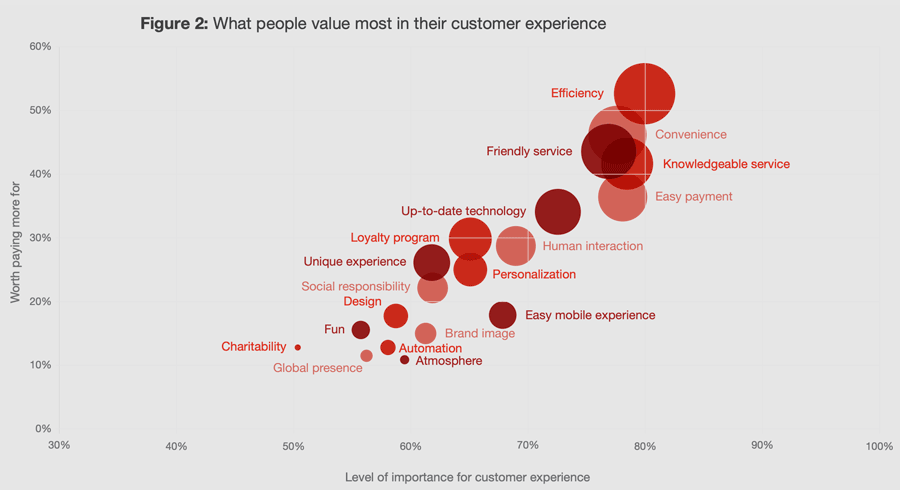
Image: PwC
Open description of image
Bubble chart where the bubbles show the different elements people value in their customer experience. The X-axis represents the level of importance for customer experience and the Y-axis represents the extent to which people believe the feature is worth paying more for. Both axes are measured in percentages. The size of the bubble represents the overall importance of each element. The bubbles that are biggest, highest and furthest to the right are those that customers most value. The top scorers are efficiency, convenience, friendly and knowledgeable service, easy payment and human interaction.
This is why the tone of voice you create in your customer service emails and messages is so important. And the best tone of voice to use with an unhappy customer? An empathetic one.
Now, honestly: tone of voice in writing is tricky. It’s an imperfect art because writing lacks the literal tone of voice we use (and respond to) when we speak with someone. Instead, written words are filtered through the reader’s frame of mind at the time they read them.
You can’t control that. But there is still a lot you can do to express care and understanding for their predicament – while also helping to resolve it for them.
Here, we’ll look at some simple but powerful techniques you can use to help you show empathy in your customer service responses, and you’ll see the difference they can make in before-and-after examples of an email.
Read their message carefully
Yes, this one might sound too obvious for words, but we’re all guilty of skim-reading sometimes – especially when we’re in a hurry. But taking an extra few moments to read the customer’s message closely will ensure you have all the information you need to write that empathetic response, as well as to fully solve their problem.
If the customer has listed multiple aspects to their complaint or issue, note each one down to be sure you address them all. Check for a chain of communication: is this the first time they’ve been in touch? What have they been sent already?
And as you read, try to get a sense of how the writer feels (or is likely to feel). Look at the problems themselves and anything else they mention. Think about how you might feel in their place. But also consider that not everyone will have the same reaction in a situation: look for hints in the kind of language they use.
Tap into the customer’s perspective with questions
After you’ve read the message carefully, pause one moment more to make sure you’re thinking from the customer’s point of view and where they are right now – in other words, practise empathy.
Here are a few simple but vital questions to work through to do this (as well as to help clarify all the information you should include):
- What are the issues the customer has raised?
- How do they seem to feel, or how are they likely to feel, about these issues?
- Which aspect of the problem seems most important to them?
- Considering what you know of them, how is your reply likely to make them feel?
- What do they already know about the subject? What more do they need to know?
- What other interactions, if any, have they had with customer service or the company so far?
- What will satisfy them?
Another key question to ask yourself is how do you want the customer to feel after they’ve read your reply? (This is actually a great question to ask before doing just about any kind of writing, and it’s always a key part of our training. It’s good to remember that our decisions are often led by our emotions).
Also, what do you want them to think, know or do? Be clear what the main message you have to get across to them is, and don’t lose sight of that as you compose your response.
Apologise if the situation calls for it – and make it sincere
A simple ‘I’m sorry’ can go a long way in placating a peeved customer – in some cases, it will be the most important thing you do in your response. But be sure to make your apology count. To do this:
- do it in your opening paragraph
- make sure it sounds sincere and accepts responsibility
- consider repeating your apology at the end if you’re writing a longer email that deals with a number of significant issues.
Try not to accidentally write a non-apology apology – the kind that adds caveats or doesn’t actually take responsibility for anything, like ‘If you feel you have been inconvenienced, we offer apologies.’ This is likely to be as annoying as having no apology at all.
Instead, write it more or less as you’d say it, and acknowledge responsibility in a genuine way: for example, ‘I’m sorry our service fell short.’
And whether you include an out-and-out apology or not, be sure to acknowledge the customer’s feelings. You could write something like ‘I understand that not receiving your login information after two days is very frustrating.’ (And then, of course, be sure to supply that information!)
Do your best to see things from their perspective so you can find the best word to describe their current feelings. Having your feelings recognised and acknowledged is very powerful.
Use a reader-friendly structure for emails and letters
For many responses, the formula SCRAP will help you write a reply that is logically structured and easy to follow.
The acronym stands for situation, complication, resolution, action and politeness. Here’s how it works:
Situation
Set the scene: thank them for their email or letter about the situation, and apologise or acknowledge their feelings.
Complication
Briefly outline the problem they’ve brought to you, to show you understand it.
Resolution
Give the solution, outcome, or answer to their issue or question.
Action
Explain clearly what you or the company are going to do or have done to sort things out – or any action the customer needs to take.
Politeness
Leave them with a good impression. The end is an opportunity to apologise again (if that’s needed), to invite them to come back to you if they need more help and to finish with a courteous sign-off.
If you’re writing something a little different, like letting a customer know if their formal complaint will be upheld, you could start with the main message – the yes or no. After that, you could go into a bit of (relevant) detail about why this was the decision.
Use clear, simple and natural language
Making an effort to keep your writing clear and easy to read is always a sign of respect for your reader, whatever you’re writing. But empathetic language in particular should be clear, natural, easy to understand and (where you feel it’s appropriate) conversational. Go for friendly and professional, avoiding being too informal or pally.
Use ‘I’ and ‘we’ to take responsibility for the situation, but try not to overdo the corporate ‘we’ that keeps the customer at a distance.
You’ll sound human and transparent when you use simple, concise language – that means choosing short words more often than long ones (which can leave you sounding overly cold and formal). So, write ‘then’ or ‘next’ rather than ‘subsequently’, and ‘as soon as you can’ not ‘at your earliest convenience’.
And favour the active voice over the passive, as this tends to sound more natural and avoids making it sound like you or the company are ducking the blame. So, for example, you’d write:
we didn’t deliver the package on time
instead of
the package was not delivered on time.
There are a few exceptions to this rule and it usually comes down to being tactful. For example, the passive ‘the form was not filled in correctly’ is more diplomatic than ‘you made a mistake filling in the form’.
Be specific (but keep it relevant)
Increasingly these days, people expect a level of personalisation throughout their customer experience – and that should extend to customer support replies. Part of this will be down to how your system keeps track of people across their whole customer journey and the interactions they’ve had before, to carry over information and remember them across every touchpoint.
You may or may not have any control over that side of things. But in your writing, you can adopt a personalised approach too. Show you’ve ‘heard’ the customer by referencing specifics from their message of the problems they’re facing, rather than referring generically to ‘issues’ or ‘poor service’.
And give your messages an extra human touch where the customer has given you the opportunity. Do they mention another person (or even a pet) who’s affected by the issue, or any other knock-on effects? Refer to these too.
But don’t feel that being specific means you have to provide lots of detail about processes on your side of things, unless it’s genuinely important they know. Remember it’s about them, not you.
Empathy in action
Now let’s look at all this in action. First, we’ll look at a customer’s complaint email, then at an example of writing without empathy – and then with it.
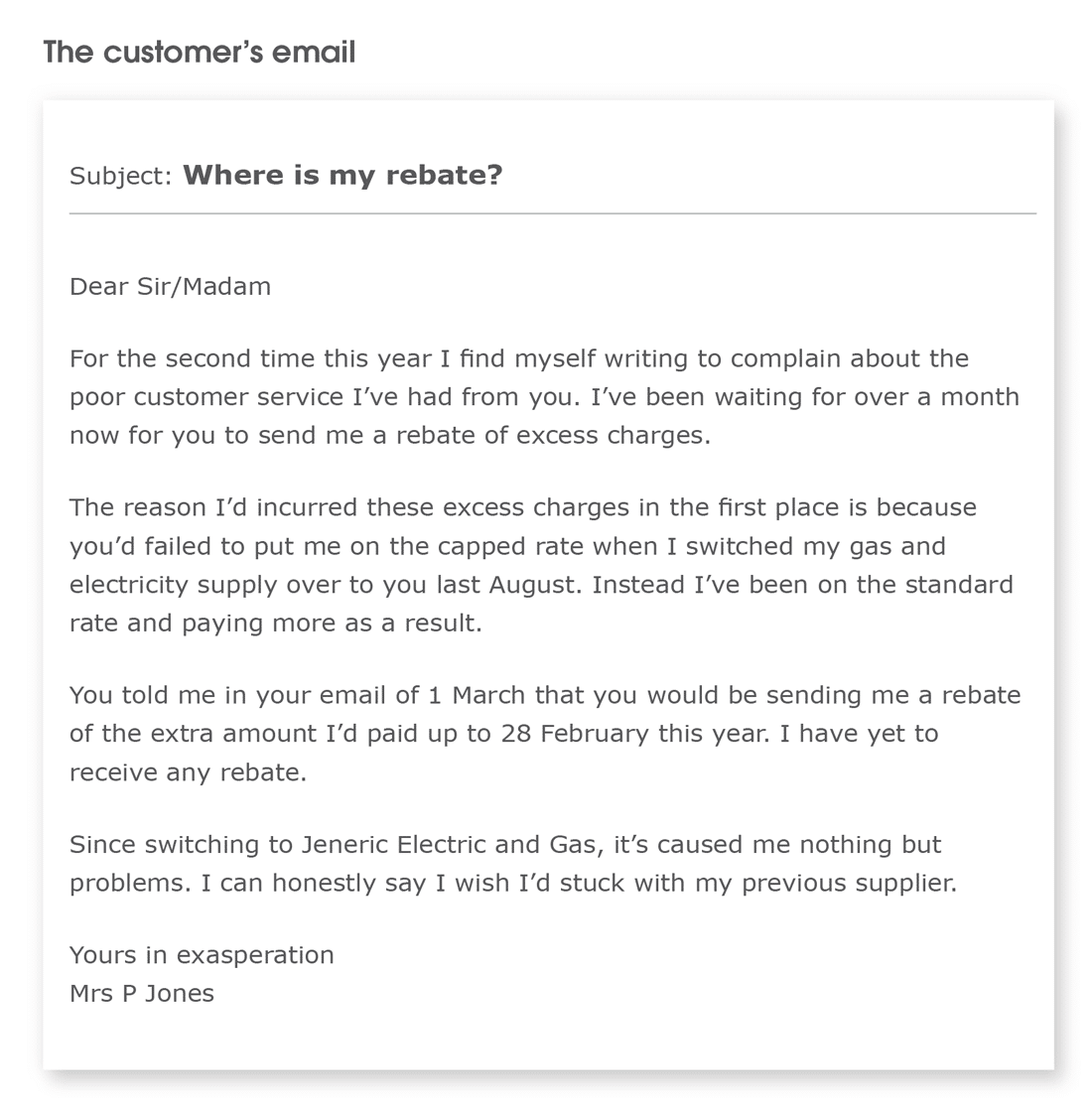
Open image transcript
The customer’s email
Subject: Where is my rebate?
Dear Sir/Madam
For the second time this year I find myself writing to complain about the poor customer service I’ve had from you. I’ve been waiting for over a month now for you to send me a rebate of excess charges.
The reason I’d incurred these excess charges in the first place is because you’d failed to put me on the capped rate when I switched my gas and electricity supply over to you last August. Instead I’ve been on the standard rate and paying more as a result.
You told me in your email of 1 March that you would be sending me a rebate of the extra amount I’d paid up to 28 February this year. I have yet to receive any rebate.
Since switching to Jeneric Electric and Gas, it’s caused me nothing but problems. I can honestly say I wish I’d stuck with my previous supplier.
Yours in exasperation
Mrs P Jones
Read – then write
What does this customer feel? They’ve given plenty of clues: this is the second time they’ve had to get in touch, their tone sounds irritated, the events they describe sound frustrating – and they even tell you outright how they feel in their sign-off.
Let’s look at the right way – and the wrong way – to reply to this complaint.
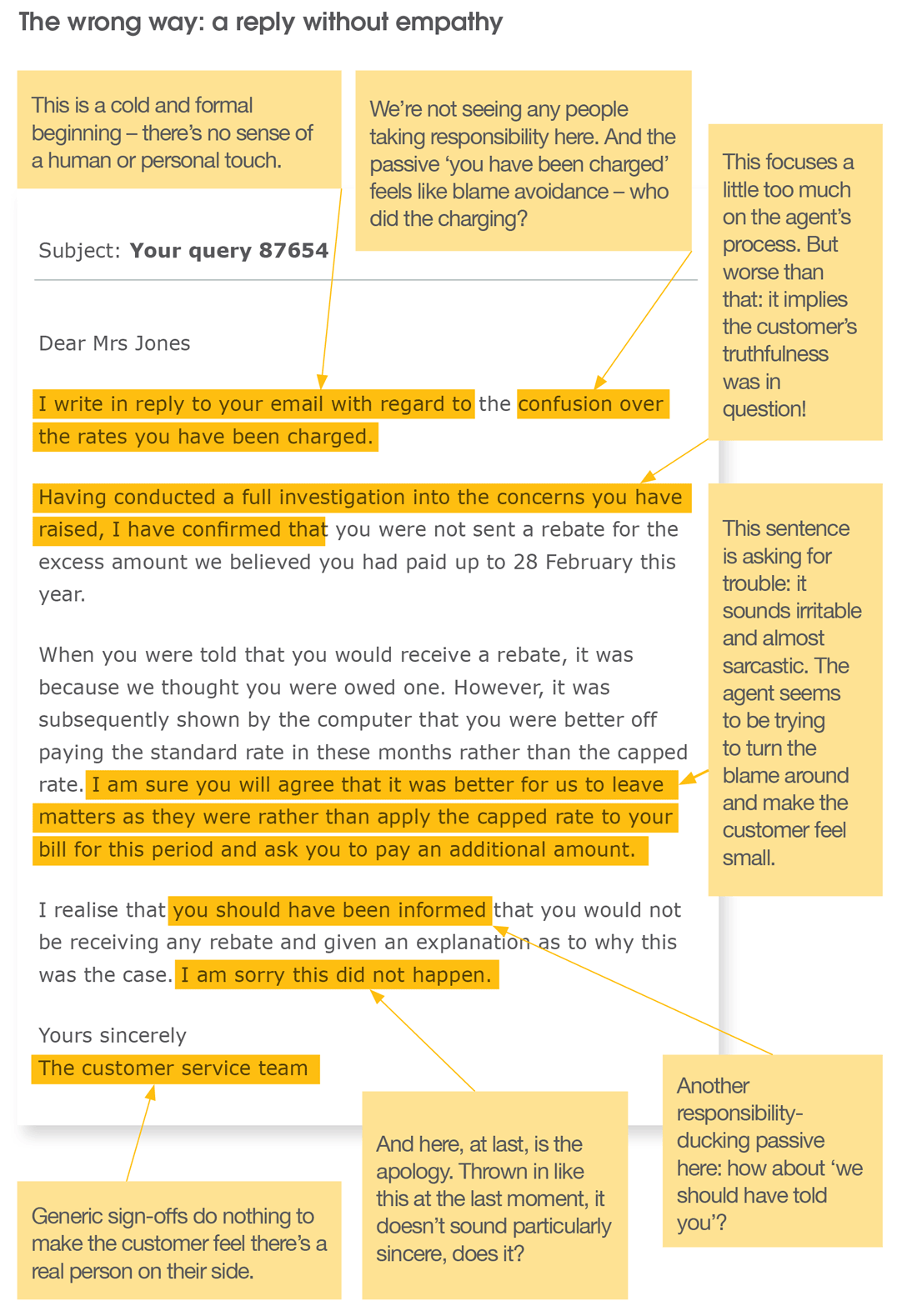
Open image description and transcript
The wrong way: a reply without empathy
Example reply with annotations. Taking it paragraph by paragraph, the email and corresponding annotations read:
Subject: Your query 87654
Dear Mrs Jones
I write in reply to your email with regard to the confusion over the rates you have been charged.
Commentary:
- This is a cold and formal beginning – there’s no sense of a human or personal touch.
- We’re not seeing any people taking responsibility here. And the passive ‘you have been charged’ feels like blame avoidance – who did the charging?
Having conducted a full investigation into the concerns you have raised, I have confirmed that you were not sent a rebate for the excess amount we believed you had paid up to 28 February this year.
Commentary:
- This focuses a little too much on the agent’s process. But worse than that: it implies the customer’s truthfulness was in question!
When you were told that you would receive a rebate, it was because we thought you were owed one. However, it was subsequently shown by the computer that you were better off paying the standard rate in these months rather than the capped rate. I am sure you will agree that it was better for us to leave matters as they were rather than apply the capped rate to your bill for this period and ask you to pay an additional amount.
Commentary:
- This last sentence is asking for trouble: it sounds irritable and almost sarcastic. The agent seems to be trying to turn the blame around and make the customer feel small.
I realise that you should have been informed that you would not be receiving any rebate and given an explanation as to why this was the case. I am sorry this did not happen.
Commentary:
- ‘… you should have been informed’: another responsibility-ducking passive here. How about ‘we should have told you’?
- And here, at last, is the apology. Thrown in like this at the last moment, it doesn’t sound particularly sincere, does it?
Yours sincerely
The customer service team
Commentary:
- Generic sign-offs do nothing to make the customer feel there’s a real person on their side.
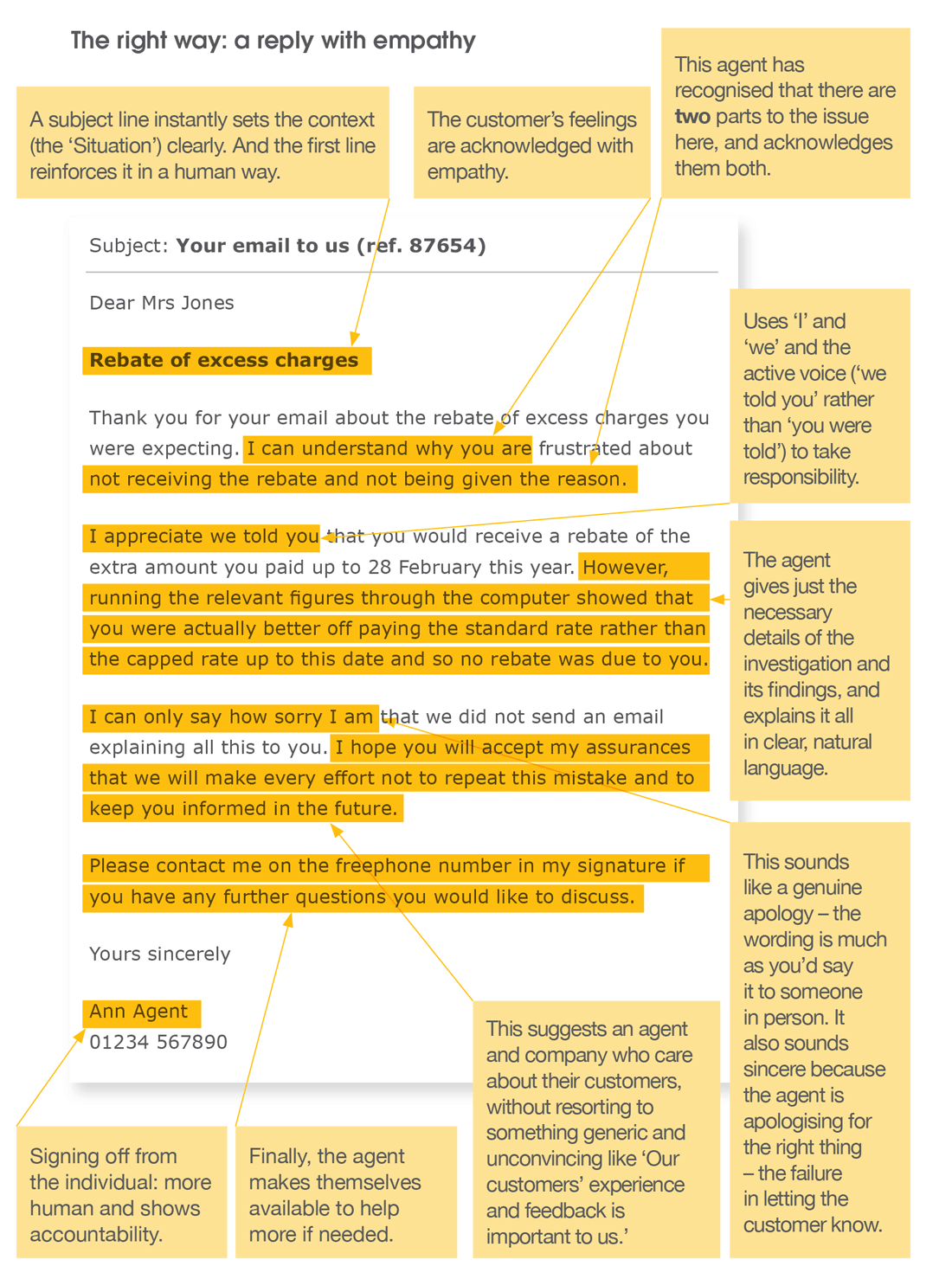
Open image description and transcript
The right way: a reply with empathy
Example reply with annotations. Taking it paragraph by paragraph, the email and corresponding annotations read:
Subject: Your email to us (ref. 87654)
Dear Mrs Jones
Rebate of excess charges
Commentary:
- A subject line instantly sets the context (the ‘Situation’) clearly. And the next line reinforces it in a human way.
Thank you for your email about the rebate of excess charges you were expecting. I can understand why you are frustrated about not receiving the rebate and not being given the reason.
Commentary:
- The customer’s feelings are acknowledged with empathy.
- This agent has recognised that there are two parts to the issue here and acknowledges them both.
I appreciate we told you that you would receive a rebate of the extra amount you paid up to 28 February this year. However, running the relevant figures through the computer showed that you were actually better off paying the standard rate rather than the capped rate up to this date, and so no rebate was due to you.
Commentary:
- Uses ‘I’ and ‘we’ and the active voice (‘we told you’ rather than ‘you were told’) to take responsibility.
- The agent gives just the necessary details of the investigation and its findings, and explains it all in clear, natural language.
I can only say how sorry I am that we did not send an email explaining all this to you. I hope you will accept my assurances that we will make every effort not to repeat this mistake and to keep you informed in the future.
Commentary:
- This sounds like a genuine apology – the wording is much as you’d say it to someone in person. It also sounds sincere because the agent is apologising for the right thing – the failure in letting the customer know.
- The final sentence suggests an agent and company who care about their customers, without resorting to something generic and unconvincing like ‘Our customers’ experience and feedback is important to us.’
Please contact me on the freephone number in my signature if you have any further questions you would like to discuss.
Commentary:
- Finally, the agent makes themselves available to help more if needed.
Yours sincerely
Ann Agent
01234 567890
Commentary:
- Signing off from the individual: more human and shows accountability.
Putting empathy to work
As we’ve touched on, a customer’s experience is made up of every contact they have with your company. Any one of these interactions – as well as the sum total of them all – can make or break a customer’s relationship with you.
In your role, you are in a prime position to help strengthen that relationship, and we hope this article has given you some inspiration to do that with your next response. (And every one after that.)
We go into even more detail on how to bring more empathy into your customer service writing in our guide How to write with empathy: you can download that here. (And feel free to share it with your customer service team or colleagues.)
Image credit: SpeedKingz / Shutterstock
